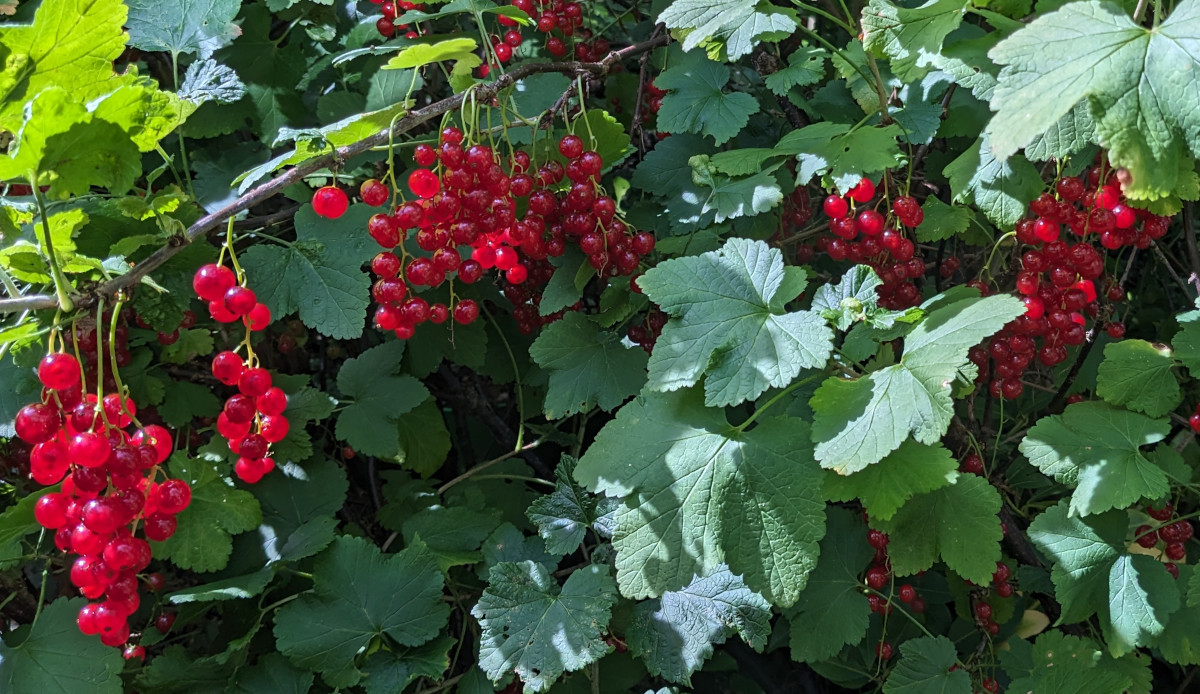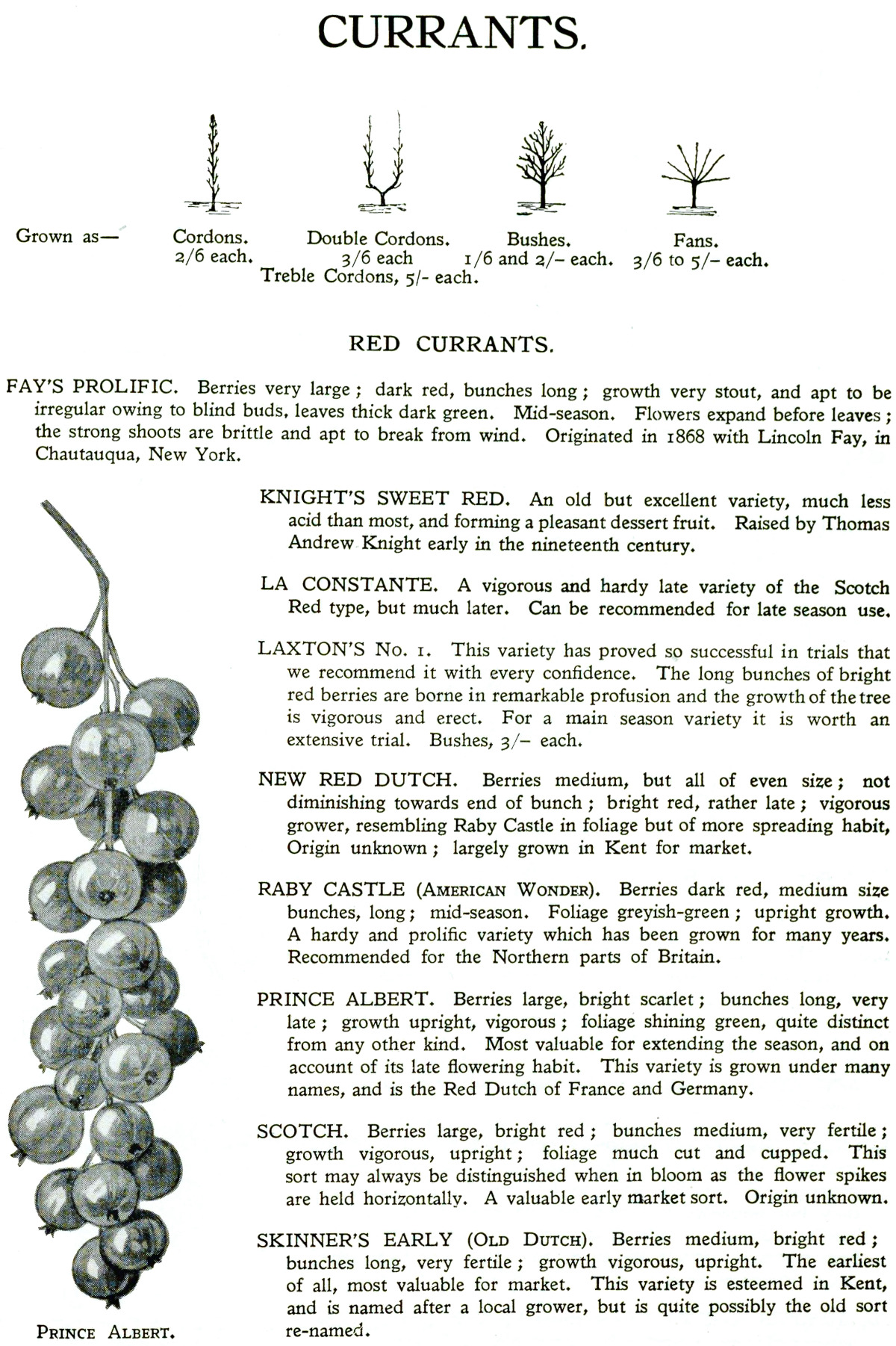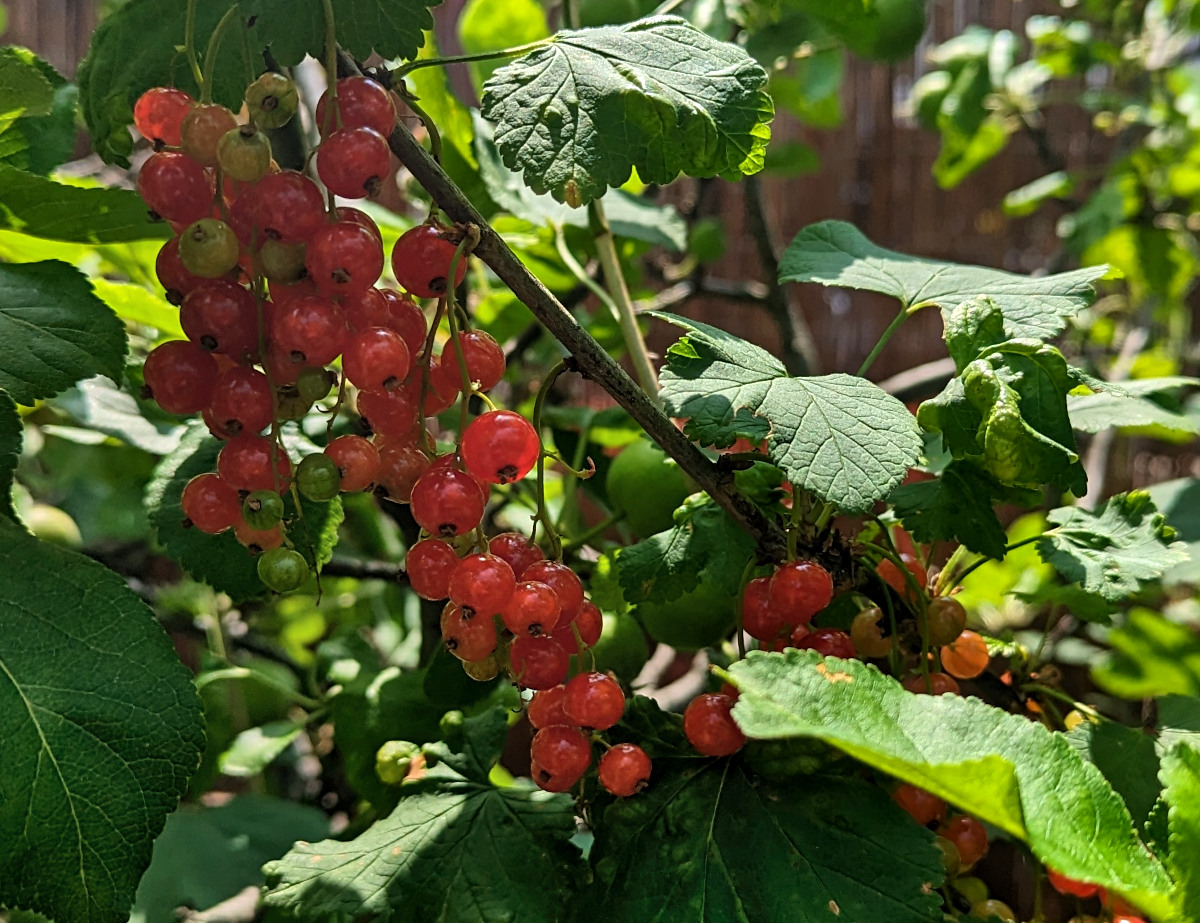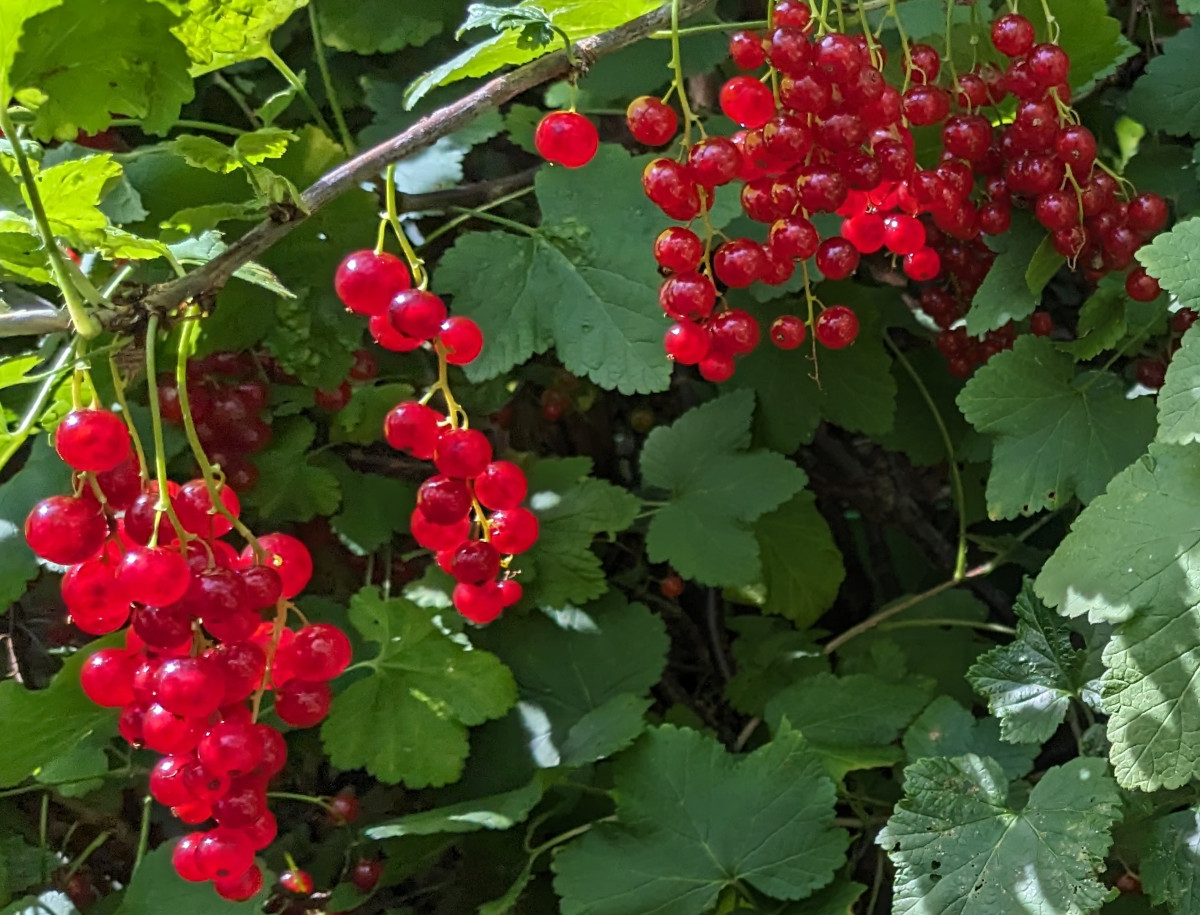Exploring Red Currant varieties or cultivars and does it make any difference.

Red currants are a jewel of the garden, known for their vibrant colour, tangy flavour, and versatility in cooking and baking.
Table of Contents
Each different red currant variety brings its unique characteristics to the garden be it a flavour profile, yield potential, harvesting date or adaptability to different climate and soils.
Varieties like Rovada are known for their resistance to common currant diseases, making them easier to grow organically.
Red currants are differentiated into early season, mid or main season varieties and late season cultivars. While the actual time differences between when redcurrants are ready is somewhat variable, I have found it is two to three weeks.
I grow 4 different cultivars of redcurrant and have never had the season last more than 2 months.
Why Variety Matters:
Just like apples or tomatoes, different red currant varieties offer unique characteristics. Some are known for their exceptionally large berries, while others boast superior disease resistance or a particularly sweet taste.
Choosing the right variety can significantly impact your harvest size, flavour, and overall growing experience.
Below: How currants are described in the catalogue.

Exploring the different varieties reveals a fascinating range of flavours, sizes, and growth habits, allowing gardeners and fruit enthusiasts to choose the perfect currant for their needs.
Just how much difference does variety make when it comes to red currants?
I have found that the difference between early and mid-season varieties of red currant is about two weeks, with roughly the same gap till late season cultivars.
I am able to get a bigger difference in the fruiting times of my currants by planting some in my north facing garden. It is colder and gets less sun and I have found fruiting can be as much as a month later, so planting location really is key.
Looking at the dates I have taken my pictures on the earliest I have ever begun to harvest redcurrants is the 5 June and the latest I have picked ripe redcurrants is 31st July.
One other thing to account for is there is a tendency for the earlier ripening currants to produce smaller and fewer fruits per plant. They may also be more tart as they have not had as much time to ripen in the sunshine.
I would also point out that the average palette would not be able to tell which variety has higher sugar content, you need to measure the Brix. It is possible to taste the increased sharpness of earlier fruit.
Should you stick to one redcurrant cultivar or grow many varieties?
I grow 4 common cultivars of red currants in three locations and to be quite frank the extended picking period and freezing of berries because there not ready, and there are still some to harvest, is getting to be a bit of a pain in the arse.
Currants are self-pollinating, but having more than one variety can increase yield. Planting different types not only boosts pollination but also gives you a colourful and varied harvest.
Below: Jonkeer van Tets is a reliable but variable early cropper. The berries are odd sizes and ripen over time.

It may be an idea to stick to one cultivar, redcurrants tend to be batch picked and processed and a single type will enable you to pick in short time and process at once.
Popular Varieties of Red Currants:
Let's delve into the world of red currant cultivars!
Jonkeer van Tets: One of the earliest varieties to ripen, Jonkeer van Tets is prised for its large, bright red berries that have a sweet-tart flavour. For me this variety is early, often being ready to pick in early June but I find it suffers from random berry size and the fruit doesn't always ripen at the same time.
This variety is vigorous and productive, making it a favourite among gardeners who want a reliable crop year after year. Its early harvest also means you can enjoy fresh red currants at the start of summer.
Rovada: Rovada is a late-season variety known for its long, heavy trusses of berries. The fruits are slightly larger than those of other varieties, with a balanced sweetness and acidity that makes them ideal for fresh eating and preserves.
Below: I use Rovada for wine making. Large sun ripened berries with high sugar content make a refreshing sparkling wine.

Rovada’s resistance to disease and excellent yield make it a top choice for home gardens and commercial growers alike.
Rosetta: Rosetta offers a sweet-tart flavour with berries that are slightly smaller than some other varieties but packed with juice. This variety is appreciated for its slightly milder taste, making it great for fresh consumption or in lighter desserts.
Rosetta enjoys full sun but can tolerate partial shade, which is good for gardeners with less sunny plots.
Red Lake: A classic variety, Red Lake is often chosen for its versatility and adaptability. It produces medium-sized berries with a rich, tangy flavour. Red Lake bushes are compact and manageable, making them a good option for smaller gardens or container growing. This variety also performs well in a range of climates.
Laxton’s No. 1: An old English variety, Laxton’s No. 1 is valued for its reliability and high yields. The berries are bright red and have a distinctly sharp flavour, perfect for traditional recipes like red currant jelly or cordial. This variety’s sturdy growth habit makes it easy to prune and maintain.
Stanza: Stanza is a lesser-known but highly regarded variety among enthusiasts. It produces large, uniform berries with a mild, sweet flavour. The bush has a slightly spreading habit, which can make it an attractive addition to ornamental gardens as well as productive ones.
Junifer: For gardeners looking for an early-ripening option with exceptional flavour, Junifer is an excellent choice. This French variety produces vibrant berries that are slightly smaller than those of Rovada but pack an intense, tangy punch. It’s perfect for preserves and sauces.
Things to think about when it comes to choosing a Redcurrant cultivar:
I have found there are only a few rules when selecting a red currant type, they are all completely hardy, enjoy freezing winters and fruit well in the spring.
- If you live somewhere that has very short growing seasons choose an early fruiting variety.
- Choose cultivars that ripen at different times to extend your harvest season or select just one type for a single picking.
- Choose the variety that best suits your end use for the fruit, jams and jellies are best made from the more tart and flavourful early varieties and wine is best made from the later, sweeter types that have had time in the sun.
- Red currants are not a climacteric fruit. This means that red currants will only ripen fully while they are still on the bush. Once picked, they will not continue to ripen or become sweeter. They will soften and spoil but their sugar content won't increase and their flavour will not improve.
- While redcurrants are generally self-fertile, having multiple cultivars can improve pollination and yield.
- Some cultivars grow more vigorously than others, affecting spacing in your garden. Consider the mature size of the bush and whether the cultivar has an upright, spreading, or compact growth habit can influence how you manage the plant and space in your garden.
- Look for resistance to common redcurrant diseases like mildew, leaf spot, and rust. Cultivars with higher resistance can reduce maintenance and improve yield.
